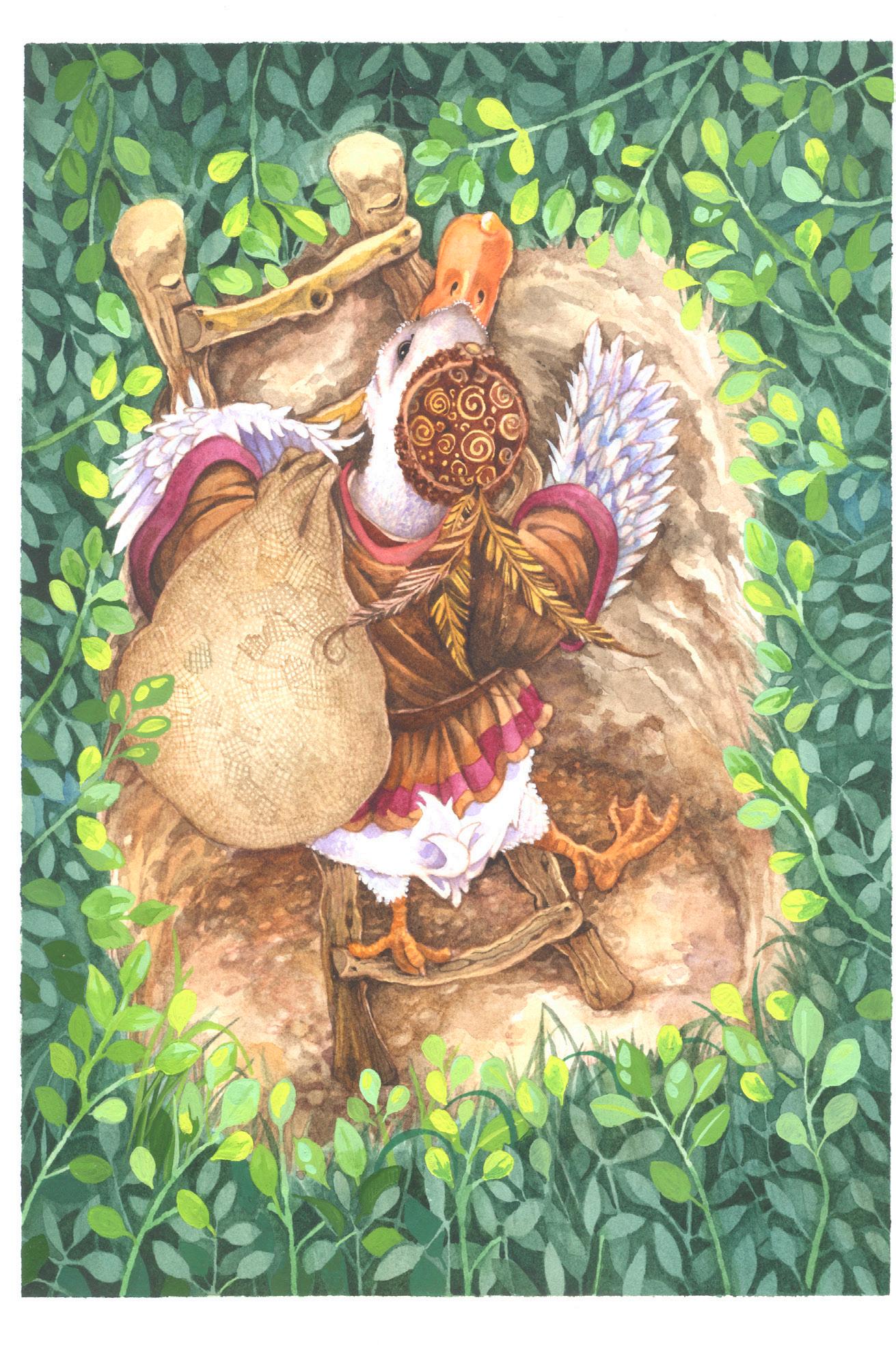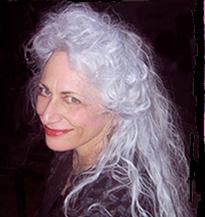
10 minute read
INTERVIEW WITH WENDY EDELSON
ARTWORK THAT WARMS THE HEART
By Lon Levin
Advertisement
When did you first think about art as something you wanted to do? Were you encouraged or discouraged by family, friends, teachers, mentors??
I started drawing when I was two. Almost all children start scribbling around that age but I began in the back of the family station wagon when we moved from New York City to Southern California. To keep me entertained ( quiet ) I was given paper and pencils and began drawing mothers holding babies, animals, children playing, the landscape out the windows…I would hand my drawings up to my parents in the front seat, and from what they tell me,,, they were very surprised. My parents both had wanted to be artists, my Dad a sculptor, my Mom a fashion designer… so they were very aware, of art and drawing. I never stopped after that fateful cross country trip. My Dad had a sort of studio in our garage and he mostly carved large figures in wood, from fallen trees. I would draw there, to be with him. I remember being tired and saying I was going to go in the house and he looked at my drawing and said,“ NO! you cannot stop until you get that foreshortening of the foot right!" To be a great artist you must first be a great draughtsman, you must draw, draw, draw and make sure the anatomy is correct… that your figures can STAND on those legs…until then, any technique is worthless, color is meaningless….The drawing, the skeleton MUST be accurate!!!!” He was very passionate and not kidding, so I’d stayed and drew until he told me it was good My family was enormously encouraging and never said I should “learn X in case
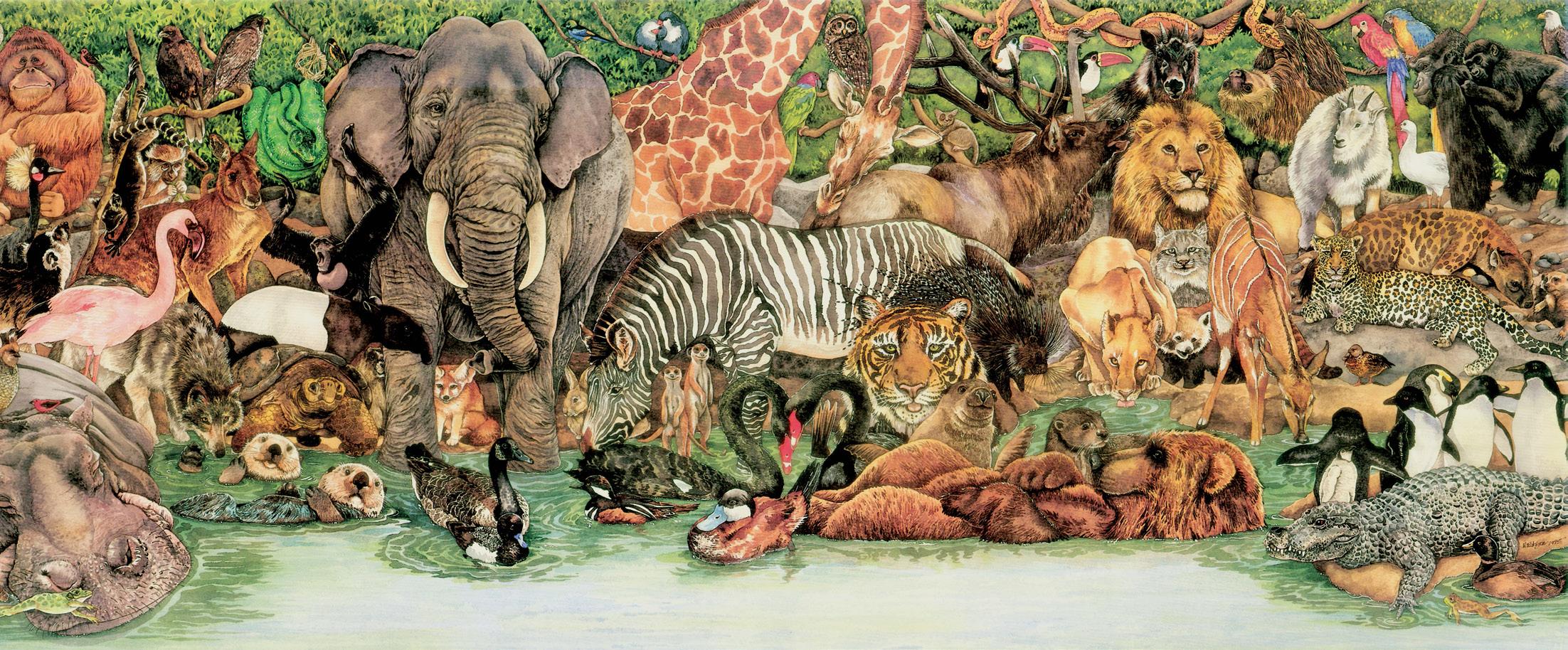
the art didn’t work out, so I’d have something to fall back on,” like many well meaning parents do. They were kind of all or nothing people. When I was in seventh grade a friend of mine’s father was a fairly well known painter. After a while I’d just go visit him in his studio. He introduced me to mediums other than pencils, like pen and ink and technical pens and gouache and watercolors.
What kind of kid were you? Where did you grow up? What were your influences?
I was very fortunate and was surrounded by people who encouraged and supported me. To be honest, I was a kind of strange kid. I was an only child, the daughter of two bohemian parents who had no interest at all in “ fitting in “. I was a loner and spent virtually all my time drawing. I went from kindergarten straight into the second grade so I was always younger than the other children. I grew up in Chatsworth, California. My Dad used to go to yard sales and estate sales all the time and brought me an OLD encyclopedia for children called The Wonder Book of Knowledge, which was filled with engravings and B & W drawings and color plates by artists like Howard Pyle, the pre-Raphalite Brotherhood and Arthur Rackham. I was positively smitten and he brought me all the books he could find by them. I particularly loved “The Wonder Clock” by Howard Pyle and also the wonderful fairy tales from Russian illustrators. All of these influenced me greatly, the strong drawing,

You do a lot of whimsical art work. How did that happen? Do you prefer kidlit art to other forms?
I really love drawing and painting the subject matter that often lends itself to children’s books, fairy tales and fables, natural animals or animals in outfits, magical creatures, children and elderly people, forests and gardens, imaginary scenes…I didn’t really start out wanting to illustrate children’s books…rather I wanted to draw and paint what appealed to me and it naturally led to children’s books. A lot of my work has also been licensed for puzzles, decorative items, fabrics…a lot of various applications.
Has the computer affected your work? Do you work traditionally and digitally? What’s going on in your head when you work on a piece? Your fears, anticipation, confidence , etc. How do you know something is finished?
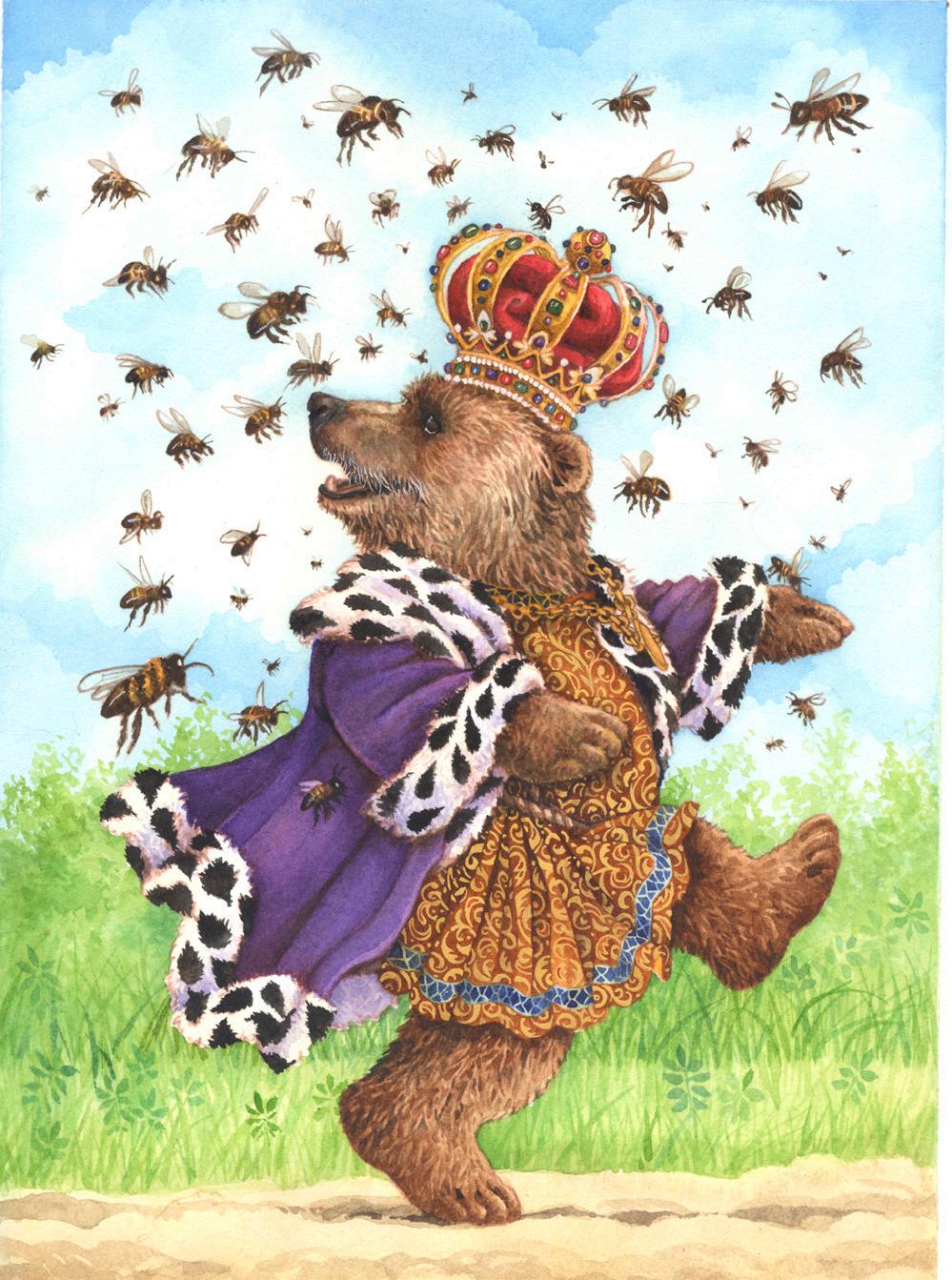
I work traditionally almost exclusively. I use PhotoShop to clean up pencil drawings, occasionally flop or shrink/enlarge elements in a sketch and I print my final pencil drawings which I often change to a light sepia onto 140# Arches hot press watercolor paper on a wide format printer. From then on, it’s all watercolor and often some acrylic gouache when I want to paint lights over darks, like sunlit leaves
The drawing is the work, it requires much more focus and more quiet. When it flows it is pure joy, other times a hand needs to be drawn 20 times until it just “feels” right. The painting is my favorite part, I just love everything about it. While I’m painting I often
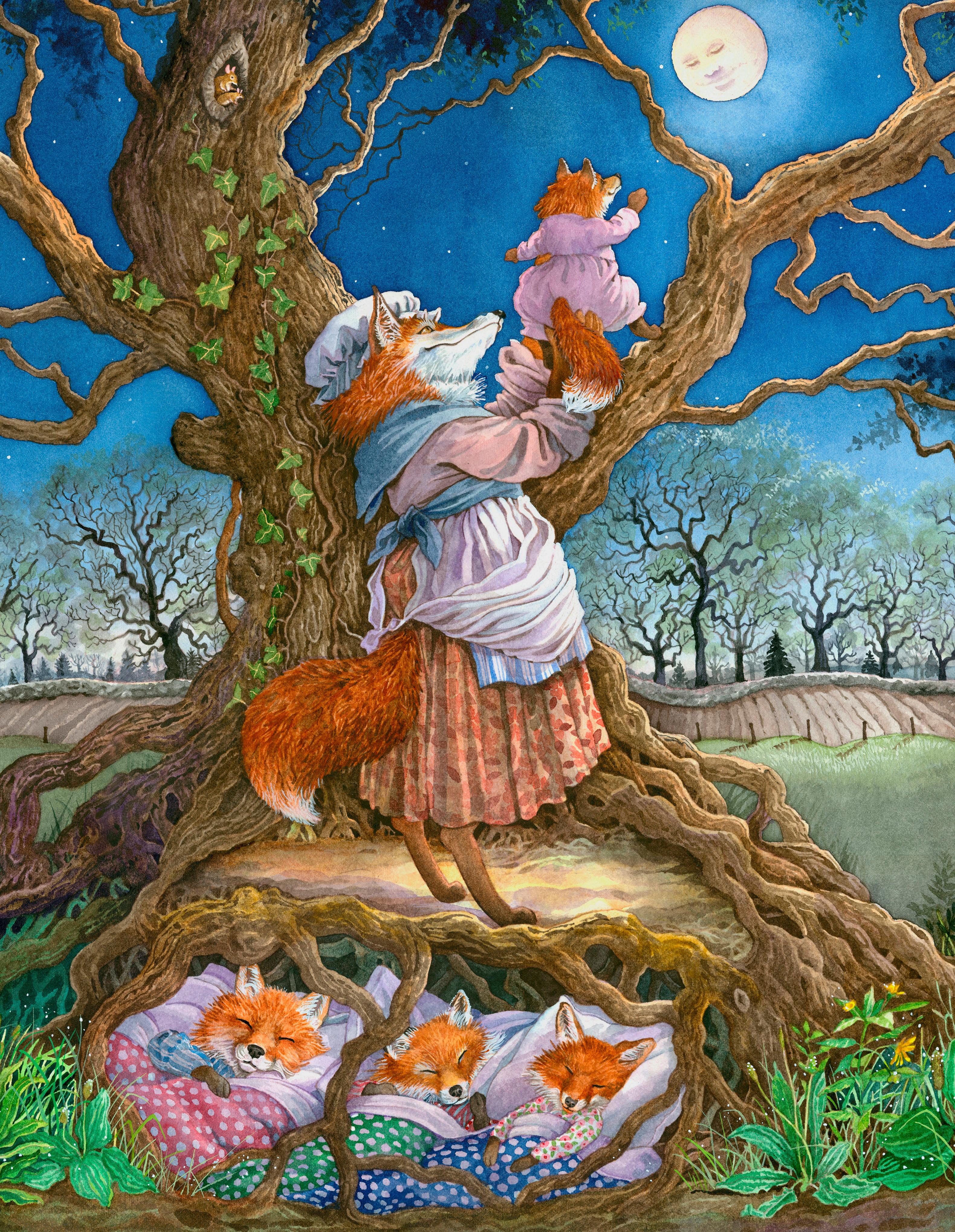
watch British mystery series or listen to audio books… often times a particular bit will become somehow embedded in the painting and I can look at a particular section of a painting and the scene from the movie or passage from a book will come flooding back! The piece just tells me when it is finished, and I’ve learned to listen.
Your work is reminiscent of classic warm and fuzzy children’s art. Is that intentional? Who if anyone influences your work?
Not really intentional, it’s just how I see the world. I really would enjoy creating some “ fantasy art” projects but a lot of them need to be kind of dark and I just don’t pull that off very convincingly.
As I mentioned before, early on I was influenced by the pre-Raphaelites like John Waterhouse, Millais and Burne-Jones…also William Morris, Arthur Rackham and Howard Pyle, Norman Rockwell and Maurice Sendak.
I’m curious about how you choose what to work on. What’s does your process entail? Start to finish. Can you give us a short step-by-step?
A lot of my work over the years has chosen me. As a working artist, besides being my avocation and calling, it has also been my means of support. Luckily for me, as time has gone by, because of my very particular and recognizable style, the projects that come my way are ones that I am happy working on. No one ever comes to me for an edgy, very graphic digital illustration with no detail!
When I begin a project there is usually a period of percolating and marinating…if it is a commercial piece, an editorial or advertising piece that is usually very short as those generally have tighter deadlines. Then I begin looking for reference photographs, medieval villages, elephants, bumblebees, oak trees, people leaping….I don’t look to copy photographs but rather to look at the form of a wing, the texture of that particular bark, anatomical information.
Then I begin scribbling. At first it is blobs which represent people, things, animals …just to get the rhythm of the piece, pieces, the book. If it is a book I need to get to know the characters… what do the people look like, who are they? Sometimes I’ll write little bios for them, for myself to help me know their personalities and how they carry themselves…all the little details that contribute to how I draw them. My favorite projects are those stories written without many adjectives or adverbs. One of my heroes is author/illustrator and Caldecott Medal winner, Uri Shulevitz who wrote a book called “Writing With Pictures”. In it he describes how words and illustrations in a picture book should be like a string of pearls, that the illustrations should SHOW things that the words do not SAY, so together words and pictures create the book. When I receive a story to illustrate I am overjoyed if the words just say, “ Joe”, and I can show that Joe is tall and gangly and has red hair that sticks up and a long, sad face.

From there I continue tightening and refining the sketches , adding detail, light and shadow. Eventually I feel the sketches are finished and then I submit them to the Art /Creative Director with whom I am working. If I am supremely fortunate they will tell me they LOVE my sketches and to go PAINT!!!!
Often times some changes will be made, usually fairly minor and relatively painless….VERY ( luckily ) occasionally major changes will be requested and then one complies, happy that no one is a fly on the studio walls. Finally the go ahead is given and the painting can begin. I scan my very finished pencil drawings, clean up unnecessary pencil lines, fix previously unseen tangent, ghosts etc. and scan them, and colorize the sketch to a light brown Then I staple the printed sketch onto a brown gatorboard panel and slosh water all over it. When it dries, it is tight and will not ripple or buckle under subsequent wash.
Depending on the image, sometimes I will paint a very light blue or raw sienna wash over the entire piece. Also, at that point I might apply frisket, masking fluid to certain details, areas that I want to remain untouched as I apply washes to the surrounding areas.
From that point on I apply many light layers, glazes, of watercolor, building up the color and working all over the painting.
My process is slow, but I am pretty fast at it, and it makes me happier than almost anything else.
When they are finished I scan them at a high resolution and send them to the publisher via an ftp service, or occasionally send the publisher the actual completed paintings… and feel a sense of accomplishment that another book has been completed but also feel a bit adrift and overwhelmed at the thought of beginning the whole process again. When I finish a book very late at night it’s a little weird, there one is, finished, after many months of work and one is just simply finished There is only the finished work and the silence, broken only be a softly snoring dog…. Once to remedy that my husband made me a recording of a cheering crowd, rousing applause. I feel silly playing it but it makes me smile just to know I can.
What do you do to promote yourself and get work? Have you worked for publishers in European countries like England or France? If not would you want to?
Not nearly enough. For most of my career I have had agents who took care of that for me, but at the moment I am unrepresented. I think about promo campaigns and mailings, postcards, portfolio sites, looking for new representation but I am currently busy with several projects so I tell myself maybe in the Fall since Summer in publishing is so sleepy.
I have never worked for any English or French publishers, but would love to. Many European books are very beautiful. There is a Russian publisher who is publishing some wonderful children’s books… I would jump at the chance to work with them given my love for Russian illustrated children’s books, fairy tales, and admiration for what they are publishing now.
What’s the future hold for you? Any ultimate goal?
Good things! I am involved in several projects that I am loving and the beginnings of something very special. Ultimately, I would love to author, not only illustrate picture books.
If you could meet anyone in the field you’re in who would it be and why? brought home the magic and joy of picture books as an art form to me. His own illustrations and words are beautiful and clear and full of emotion and sweetness. I would love to thank him for being such an inspiration.
